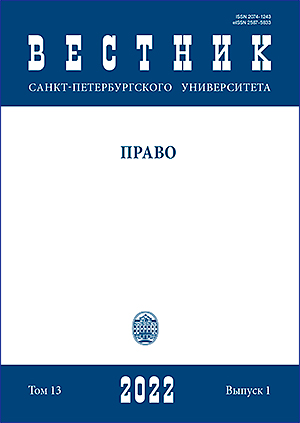Criminal protection of women’s rights in India: History and modernity
DOI:
https://doi.org/10.21638/spbu14.2022.113Abstract
In the unique criminal law model of India, a hybrid combination of principles and institutions of the three legal systems, one of the most odious crimes involves encroaching on the honor, dignity, and sexual integrity of a woman. The authors aim to analyze the criminological principles of the scale and simultaneous latency of violent sexual crimes in India. Cultural and civilizational incentives for the prevalence of rape have been identified, including the historical practice of male polygamy, early child marriage, subordination of a woman in the family, her domestic retreat and “eternal widowhood”, as well as a “gender imbalance” and girls’ infanticide in traditional Hindu families. From the point of view of the systematics of crimes, Indian criminologists distinguish more than ten different categories of “feminine torts”, including sexual assault, are classified as a group of “crimes of passion” (Articles 354, 375–376, 509 of the Indian Penal Code 1860). From the point of view of elemental composition of rape, the objective test is dominant (peno-vaginal penetration) and consists of six alternative conditions of a constitutive element “women’s consent”. The recent innovations in the IPC 1860, which expanded the definition of rape and legalized the concept of “custodial rape” from the judicial practice (Tukaram v. State of Muharashtra 1978), as a special composition of sexual violence using official position. There is a significant expansion of the legislative definition of “violence against women” in the family and at office, as well as the toughening of punishments for violent acts against women, up to the expansion of the grounds for the use of the death penalty.
Keywords:
common law, Hindu law, precedent, codification, women’s rights, gender, rape, criminal liability, death penalty
Downloads
References
Downloads
Published
How to Cite
Issue
Section
License
Articles of "Vestnik of Saint Petersburg University. Law" are open access distributed under the terms of the License Agreement with Saint Petersburg State University, which permits to the authors unrestricted distribution and self-archiving free of charge.






